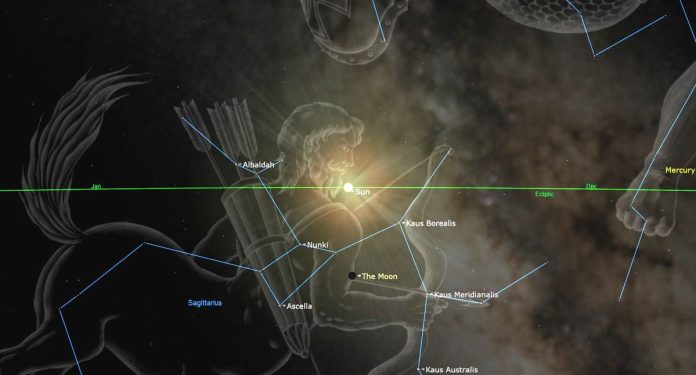In December 2024, a rare “black moon” will occur, which refers to the second new moon in a calendar month.
The second new moon of December is set to happen at 5:27 p.m. ET (2227 GMT) on Dec. 30, as reported by the U.S. Naval Observatory. This event follows two days after the waning moon passes by Mercury in the predawn sky.
A second new moon is often called a “black moon”, just as two full moons in a month are sometimes referred to as a “blue moon” – even though these terms are not true astronomical designations.
New moons occur when the sun and the moon share the same celestial longitude, a position known as conjunction. During this phase, the moon’s illuminated side faces away from Earth, making it invisible to us; new moons only become visible during solar eclipses.
New moon nights are beneficial for both professional and amateur astronomers, as the lack of a bright moon makes fainter objects in the night sky easier to observe. This is particularly advantageous in North America during the winter, as the absence of moonlight, combined with dry air conditions, provides better visibility through telescopes.
A Mercury Conjunction
On Dec. 28 at 11:24 p.m. Eastern Time, the moon will be in conjunction with Mercury, appearing about 6 degrees apart. While this event won’t be visible from the United States, viewers in New York City can try to spot Mercury and the moon in the predawn sky.
Visible Planets
During the night of the new moon on Dec. 31, Mercury will be faintly visible in the dawn skies in New York City, rising at 5:45 a.m. In the evening, Venus, Saturn, Jupiter, and Mars will all be visible at different times and locations in the night sky.
Stars and Constellations
For Northern Hemisphere observers, winter constellations like Orion, Taurus, Auriga, and others will be prominent in the night sky in January. Southern Hemisphere observers can expect to see constellations like Puppis, Carina, Vela, Crux (Southern Cross), and others in the summer sky.
If you’re interested in observing or photographing celestial phenomena during new moons, be sure to check out our guides for telescopes, binoculars, and cameras for astrophotography.




